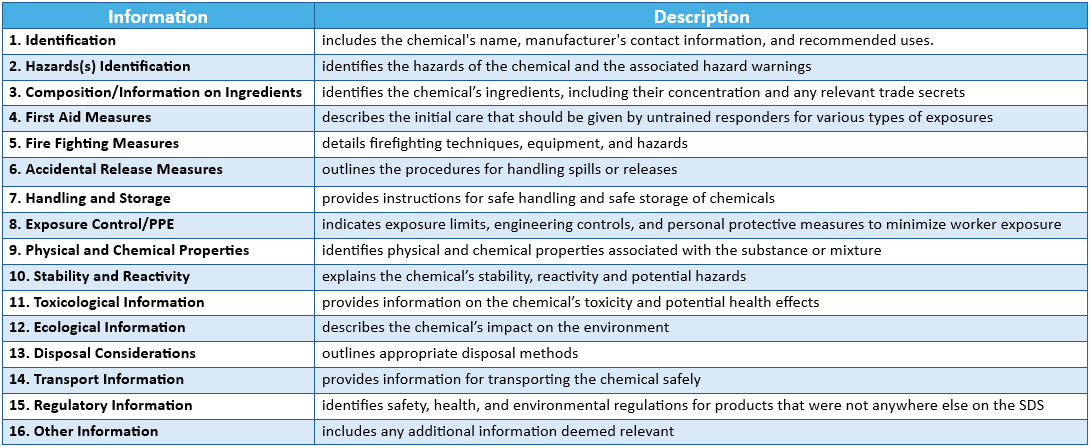Safety Data Sheets
Latest News
What are Safety Data Sheets?
Safety Data Sheets (SDS) are documents created by chemical manufacturers that provide health safety information for purchasers and end users. They are required for every chemical or hazardous substance produced or imported into the United States and most other nations. There are 16 sections of information that can be found within an SDS.

Any business that uses chemicals must maintain these informational sheets for every chemical that they have on site. That includes schools and universities. SDSs must always be easily accessible to employees. In the past, that meant printing them out and placing them in a binder. Many industries now use online applications to keep their chemical inventories up to date and to provide quick and easy access to employees.
Where Can I Find Safety Data Sheets for Chemicals on Campus?
Most of the California State University system, including CSUDH, use the company Risk and Safety Solutions (RSS) to maintain their SDSs. All employees have access to this feature of the software application. Using your campus login, sign in to https://app.riskandsafety.com/sds. The page displays a list of all available SDS for our campus. To find an SDS for a specific chemical, enter the chemical's name, product number, or vendor in the search field at the top of the page. The program allows you to print the SDS or download it onto your computer. If you need help, contact Environmental Health and Safety at ehs@csudh.edu.
Risk and Safety Solutions offers a number of additional safety applications. Use and access to these features require user profiles and permissions to be created. Environmental Health and Safety has general oversight of the program. If you are just getting started, RSS has a tutorial page that can help. RSS TUTORIAL PAGE
CSUDH uses Risk and Safety Solutions for the following:
Every department that uses chemicals or hazardous substances must maintain an accurate inventory that includes quantities and storage locations. These responsibilities often fall upon lab managers, principal investigators (PIs), or instructional support technicians (IST).
Academic Departments
- Sciences such as chemistry and biology
- Arts such as ceramics, painting sculpture, printmaking
- Theatre scene and costume shops
Facilities Departments
- Campus trades such as painters, plumbers, carpenters, locksmiths, and auto shop
- Groundskeeping
- Custodial Department
Each facility department has an administrator who may assign inventory tasks to trained employees.
Environmental Health and Safety
Environmental Health and Safety requires audits of each chemical inventory to be conducted annually. Additionally, EHS will inspect areas to ensure proper chemical labeling (hazard communication), storage, and chemical usage.
CSUDH uses RSS Inspect to perform periodic safety inspections of high-hazard work spaces throughout the campus. Through this platform, we create checklists specific to our laboratories and workshops. Qualified employees inspect these spaces regularly.
Laboratory Hazards Assessments are performed determine the potential risks to individuals in a laboratory or research work environment. Risk and Safety Solutions software is used to regularly conduct assessments within hazard categories that include:
- Chemical
- Physical
- Biological
- Radiological
- Laser
- Non-Ionizing
Environmental Health and Safety manages the overall Chemical Hygiene program on campus. If you have any questions, please contact our Chemical Hygiene Officer, Rigoberto Arenas, at rarenas@csudh.edu